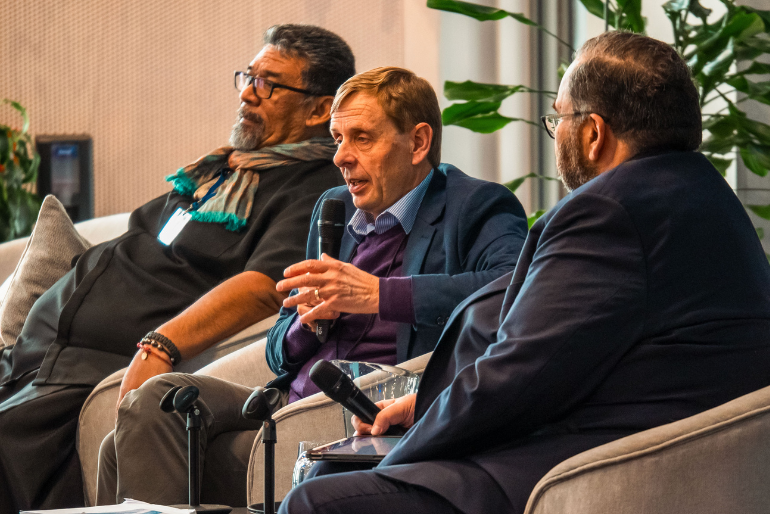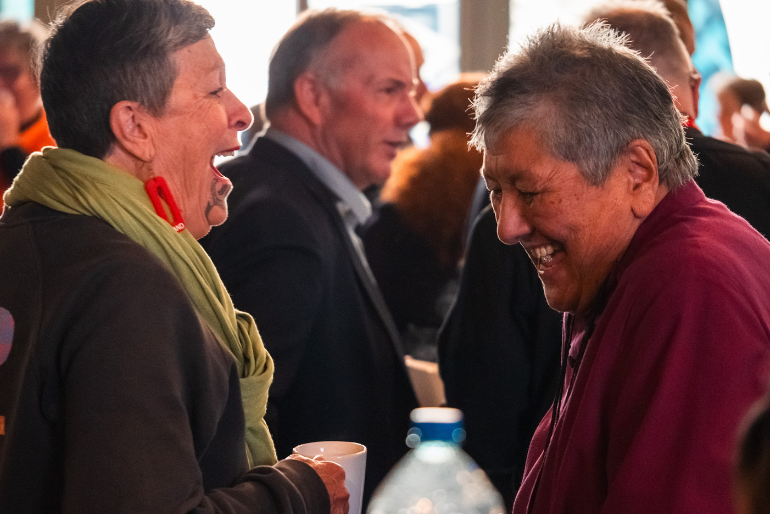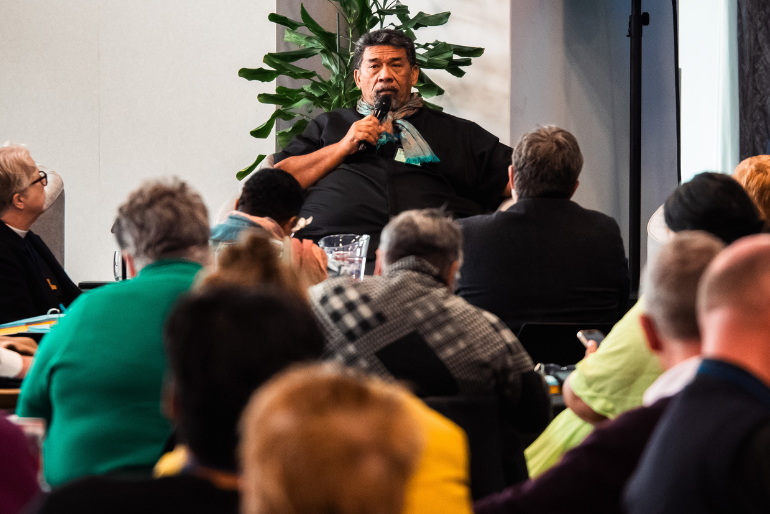


General Synod has taken a forward look at how to educate and prepare the Church to help it flourish up to 2040 beyond.
Back in 2020 Te Kotahitanga commissioned a research report to help it identify the education needs of the Anglican Church that will lead to a flourishing Church over the twenty years up to 2040.
The report, ‘Te Pae Tawhiti 2040’ was undertaken by Steve Taylor and Animoa Goold, working from many sources including on census data, numbers reported within the Church and a series of interviews of people involved in ministry education across the Anglican Church in Aotearoa New Zealand and Polynesia.
Some of the findings from Te Pae Tawhiti offer a stark reality check:
• Anglican Church affiliation now sits at the size it was in 1901
• If decadal trends in communion participation continue, some dioceses will no longer be serving sacraments by 2040.
• While similar numbers of women have been ordained as men in recent decades, way fewer women are in senior levels of leadership.
• Anglicans are the least diverse and most European of the churches in Aotearoa.
Rev Dr Hirini Kaa presented the session on behalf of Te Kotahitanga chair the Rev Susan Wallace, announcing to the Church’s Synod that statistically speaking, the Church is on track to disappear.
“It’s quite a brutal statistic, but it’s supported by data, by evidence.”
“So what are we preparing for in our education with this picture?”
Bishop Peter Carrell said it was important for the Church to make the effort to respond to the report findings.
“The report nails down where we are at as a Church...in the chapter on the data points around attendance, sacramental acts, age of clergy, and timelines on when parts of our church will be predicted to diasppear.”
“If we move past that and pretend that part of the report is not there it won’t serve us well. It highlights what we need to do better as a church.”
As part of the wānanga, members of Te Hīnota shared their own stories of mentoring and formation in ministry, their connection to theological education and their thoughts on how the Church might respond to the report.
Each table formed from across different regions and tikanga, which was good for Rev Wiremu Anania, Manutaki for Te Hui Amorangi o Te Manawa o Te Wheke, as he saw that changed the course of conversations.
“It is one thing to talk in our own Hui Amorangi about these things, but it was good to talk about this in a mix of Tikanga Māori, Tikanga Pākehā and Tikanga Pasifika...”
“Listening to each other’s voices it leads to healing and opens the pathway to Oranga Ake. I learnt a lot more in the wānanga than in the Bills and Motions.”
Heather Riches from Taumaranui in the Diocese of Waikato Taranaki said for her it was the resource-sharing ideas that stood out most, especially hearing how other Tikanga didn’t have access to the finances or other resources they needed to offer the education or the ministry essential to a flourishing church and community.
“The fulla from the Māori Anglican Church in my group was saying that their clergy have only a couple of stipends over the same number of clergy that in some dioceses they have twenty stipends. That stood out for me.”
Nick Mercer from Remuera in the Diocese of Auckland was struck by the diversity in his group and the variety of backgrounds people came from.
“I think from the wānanga I was encouraged to see that people wanted to prioritise teaching and learning for everyone. There’s not one specific group of people that the Church is wanting to prioritise over the other. And it was encouraging that they were especially talking about children, young people and young adults.”
Frances Brown from Waikato Taranaki enjoyed the wānanga on theological education,
Which she said should lead us to educate for a hopeful future, despite the story that the graphs tell.
“People can get really caught up on the statistics and on ‘The church is dying’ and ‘The buildings are falling down,’ and I think we need to embrace being a church of resurrection. We need to die in order to live.”
She also felt challenged to rethink teaching in her and others’ work for the church.
“I don’t often conceptualise my role in terms of education, and I think it is good for all of us to think about the educational roles we can play as part of the church.”
The full wānanga on the role of theological education in the future of the Anglican Church is available to view on Youtube and Facebook.

















Comments
Log in or create a user account to comment.